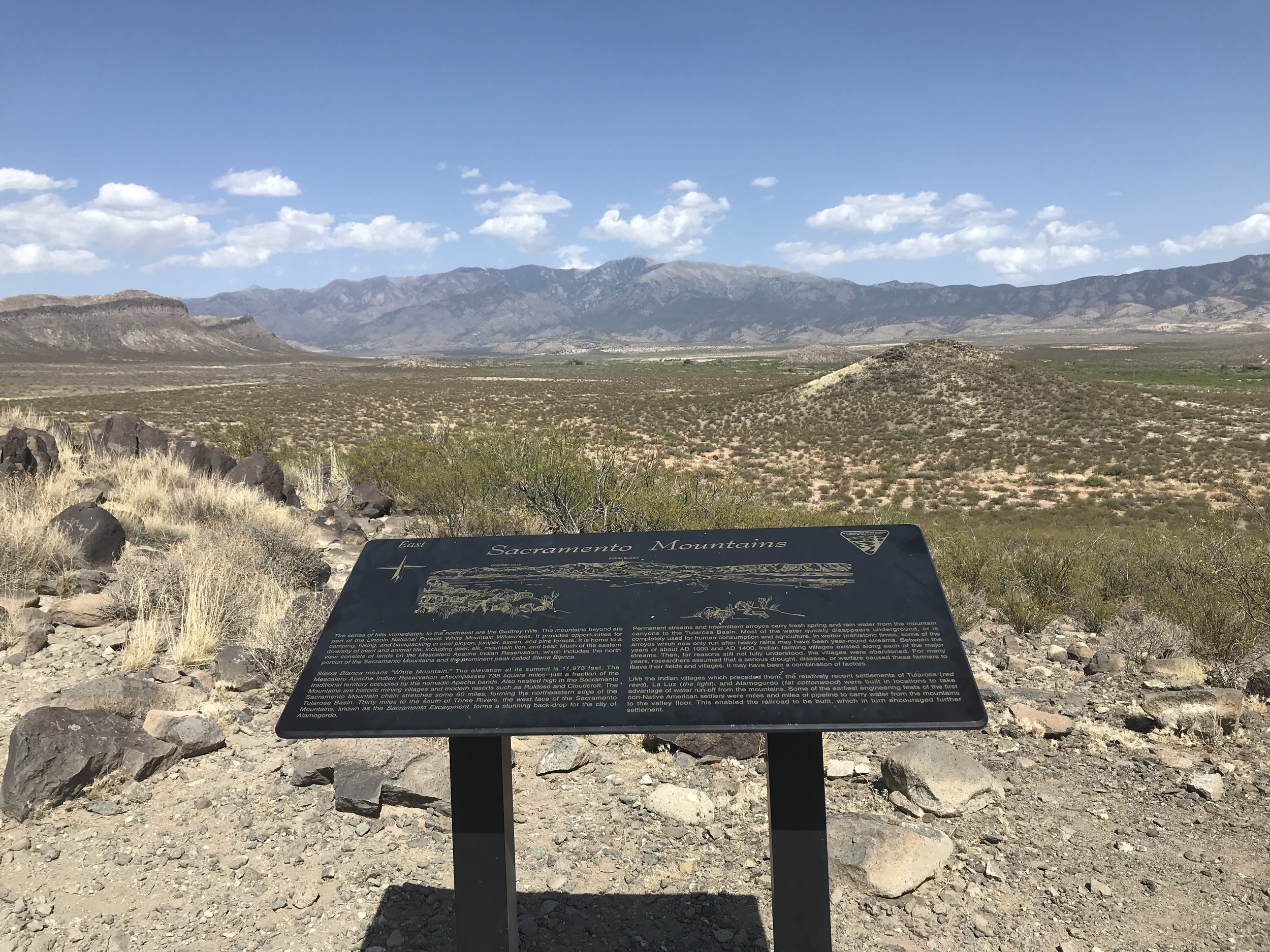Recap of the Mescalero Apache Church Tour
An article by Hanna Churchwell
St. Patrick Chapel by Pete Warzel
In April of 2022 Historic Santa Fe Foundation had the pleasure of hosting an architectural and cultural history tour of three churches on the Mescalero Apache Reservation with Frank Graziano, founder of Nuevo Mexico Profundo and author of Historic Churches of New Mexico Today. We were accompanied by 16 tour attendees and two speakers in addition to Frank: Harry Vasile and Father Dave Mercer. The tour commenced on Sunday, April 24 with a dinner and presentation by Frank on the history of the Mescalero Apache and St. Joseph Apache Mission which provided context for the tour the following day.
The Mescalero Apache have bravely fended for their people, way of life, and land for centuries, surviving war and subjugation by Spain, Mexico, and the United States. Throughout the mid-to-late 1800s and early 1900s, the U.S. government imprisoned the Apache, attempted to destroy their culture through boarding schools, and continuously encroached upon the reservation established by Ulysses S. Grant in 1873. It was the Mescalero Apache’s welcoming of the Lipan and Chiricahua Apache in the early 1900s that eventually gave them the strength in numbers to combat the intrusion into their land by settlers and the U.S. government. Understanding this era in Mescalero Apache history is key to understanding the cultural and religious synthesis apparent in St. Joseph Apache Mission and the role of Catholicism in the lives of Mescalero Apache people today.
On Monday, we first visited St. Joseph Apache Mission: a tall Romanesque church in between Sierra Blanca and the Sacramento Mountains, two of four mountains sacred to the Mescalero Apache. Harry Vasile, Frank Graziano, and Father Dave Mercer told us about the past, present, and future of the chapel. Built over the course of 20 years, starting in 1920 under the guidance of Father Al Braun and with help from Mescalero Apache and Franciscan volunteers, St. Joseph was constructed from materials that were locally sourced. Father Al Braun helped shape the reputation, practices, and aesthetics we associate with the mission. He recognized the spirituality of the Mescalero Apache people, and rather than demonizing their religion and practices as the Catholic Church advocated for at the time, Father Al encouraged the Mescalero Apache to continue their traditions by utilizing the mission.
Apache traditions and values are incorporated into St. Joseph Apache Mission through paintings, stained glass, sculpture, seasonal décor, and performances. A tapestry honoring Kateri Tekakwitha, the first Native American Saint, hangs near the altar. A depiction of Christ as a Mescalero Apache medicine man, created by icon artist Robert Lentz, hangs on one end of the church. At the opposite end, there is a mural which features Crown Dancers at the puberty rites ceremony, which is a four-day-long rite of passage from girlhood to womanhood. The puberty rites ceremony is a highly important tradition to the Mescalero Apache that Father Al Braun fought against the Catholic Church to support instead of banning. Also lining the entryway of the church are portraits of Apache leaders including Geronimo. The stained-glass windows were sponsored by different families who were allowed to choose what their window depicted with the caveat that each window must include imagery associated with Mescalero Apache culture. One window depicts Mary as a girl wearing the buckskin dress associated with puberty rites and holding the baby Jesus in a traditional cradleboard. Another depicts Harry as St. Joseph and his son in garb traditionally worn by Mescalero Apache boys.
St. Joseph’s statue holds, in its left hand, one of the small trowels used to slowly fill the cracks between rocks with fresh mortar during the mission’s recent restoration. The restoration began in 2000 and was completed 14 years later, with the exception of the bell tower, which still requires maintenance. Over the years, Harry worked with a diverse and varying group of four to dig out the remnants of the broken-down lime-mortar cement and painstakingly apply new mortar. Tommy Spottedbird stayed on for the entirety of the restoration; others who participated included young Mescalero Apache women, men involved in job programs, and at-risk youth. The lime-mortar concrete used to construct the cathedral requires maintenance almost every 80 years, and the process must be undertaken again by the end of this century.

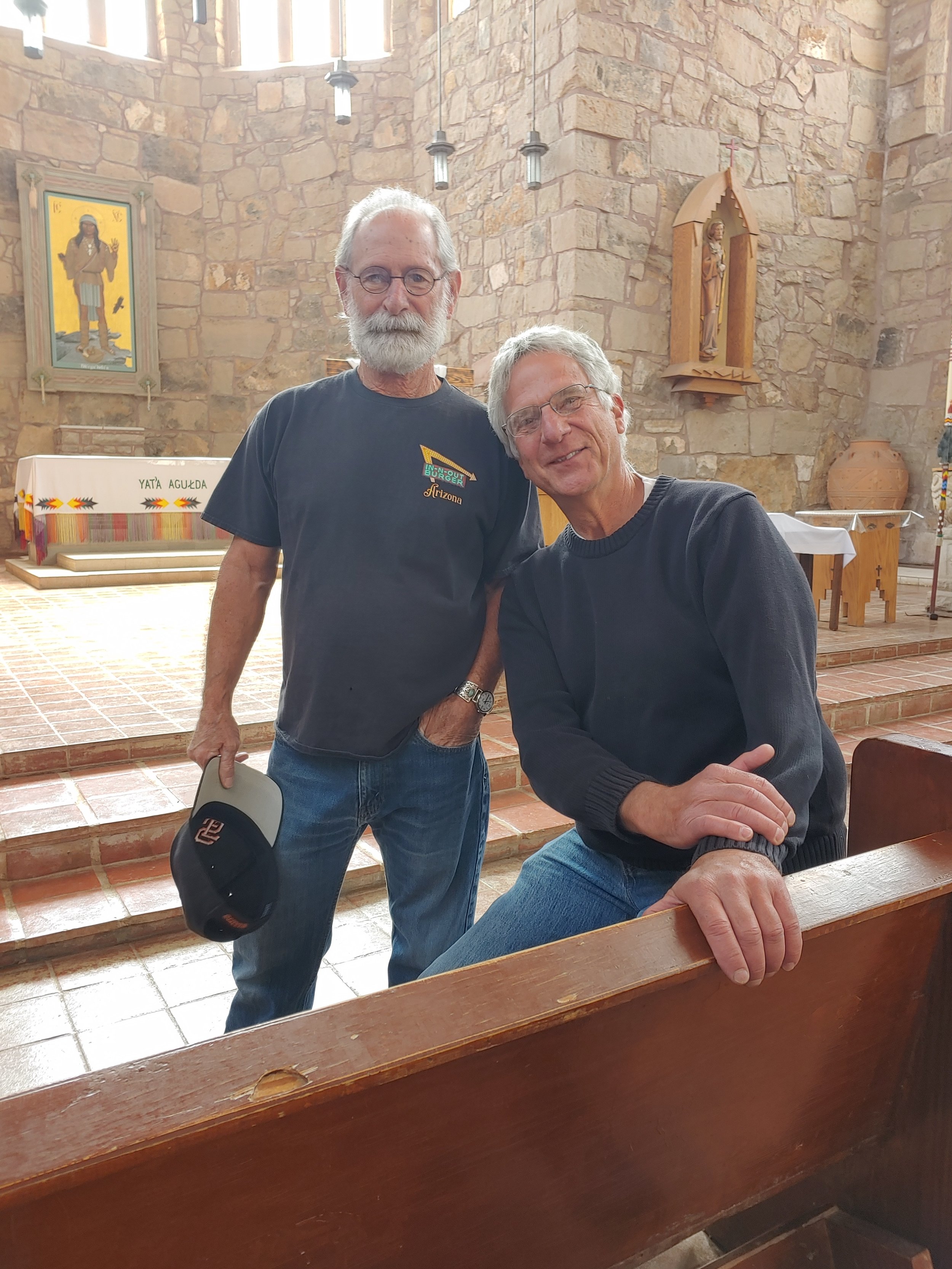

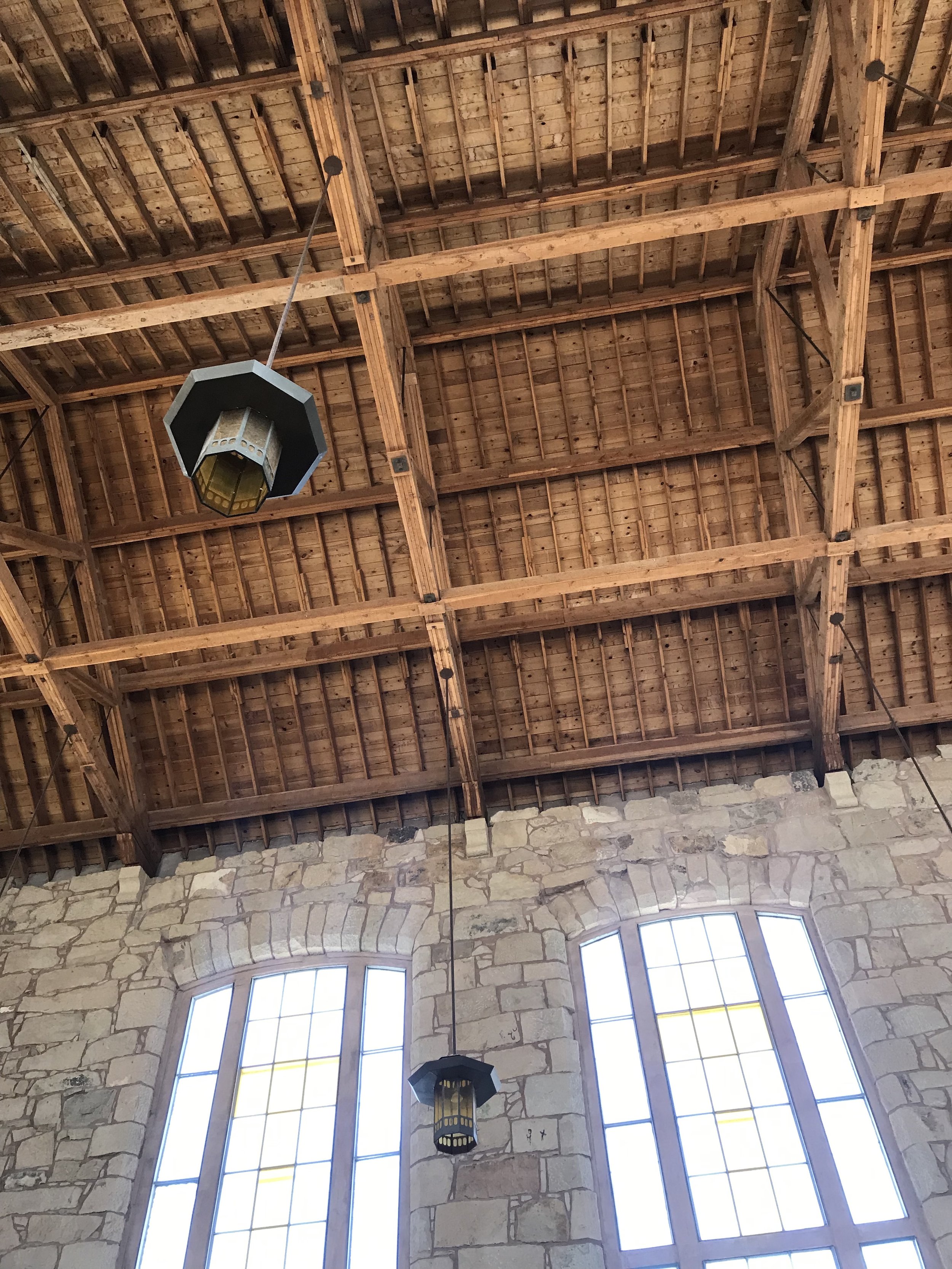
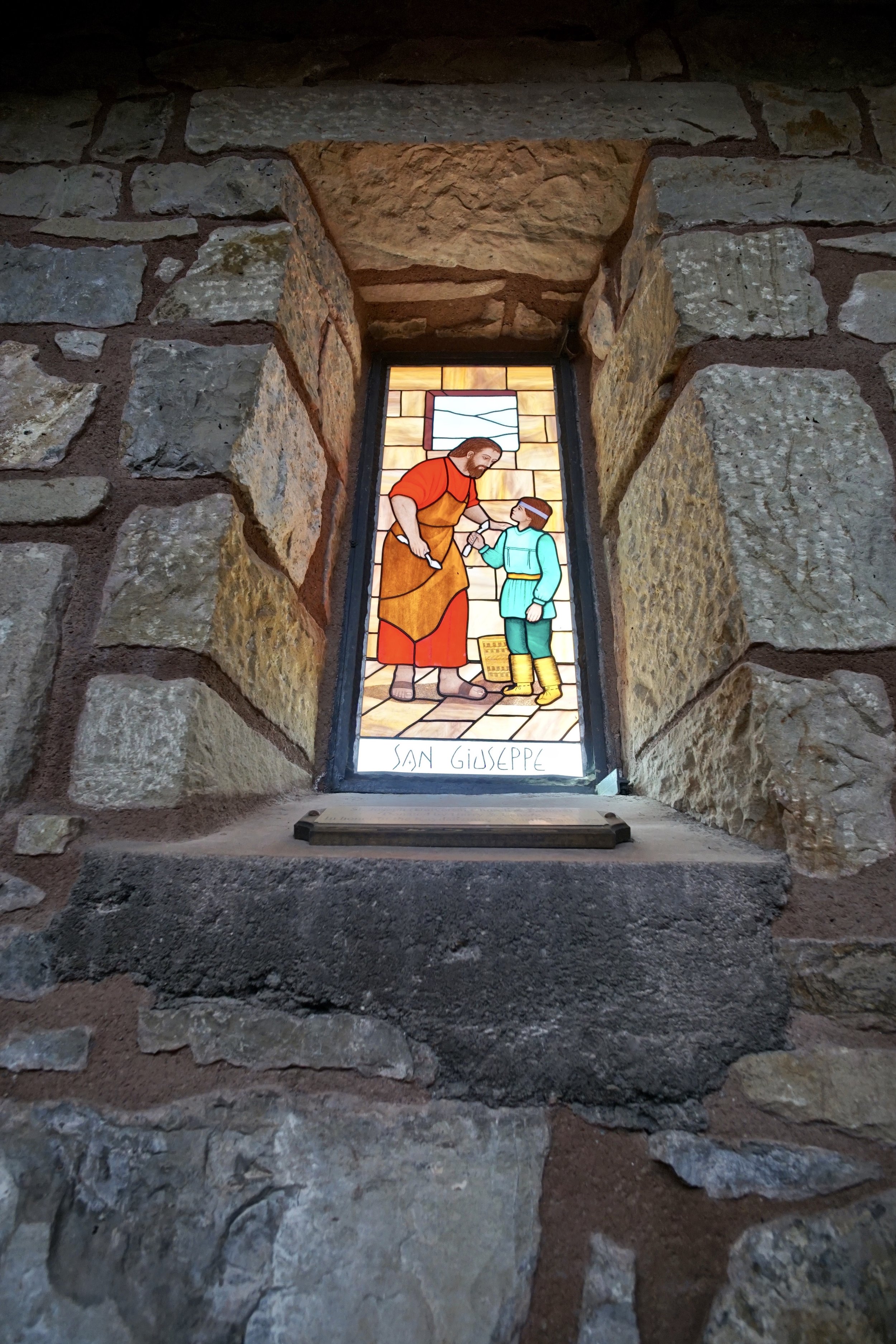

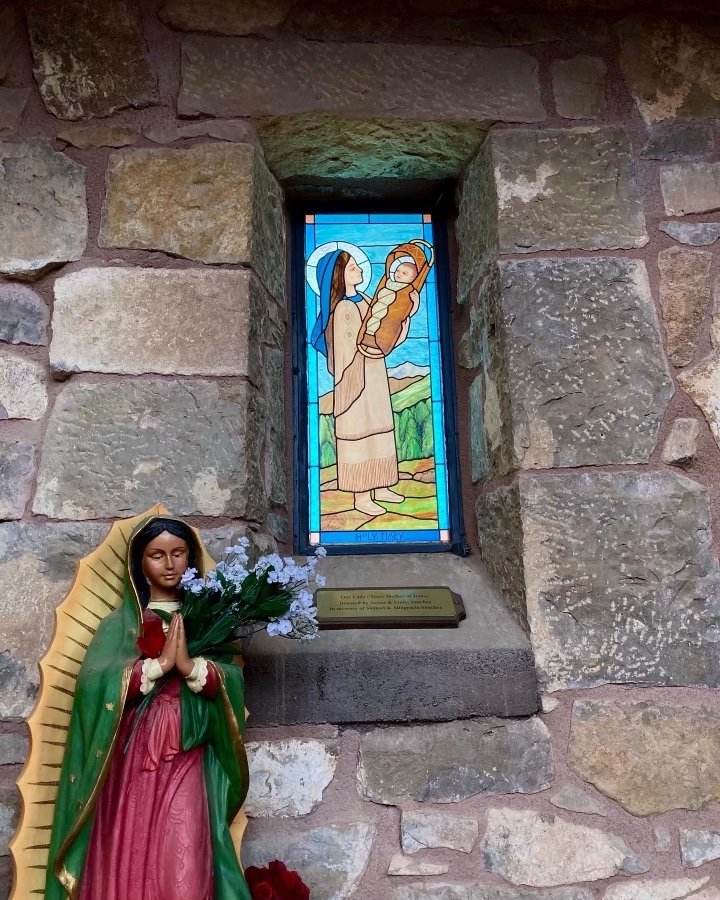
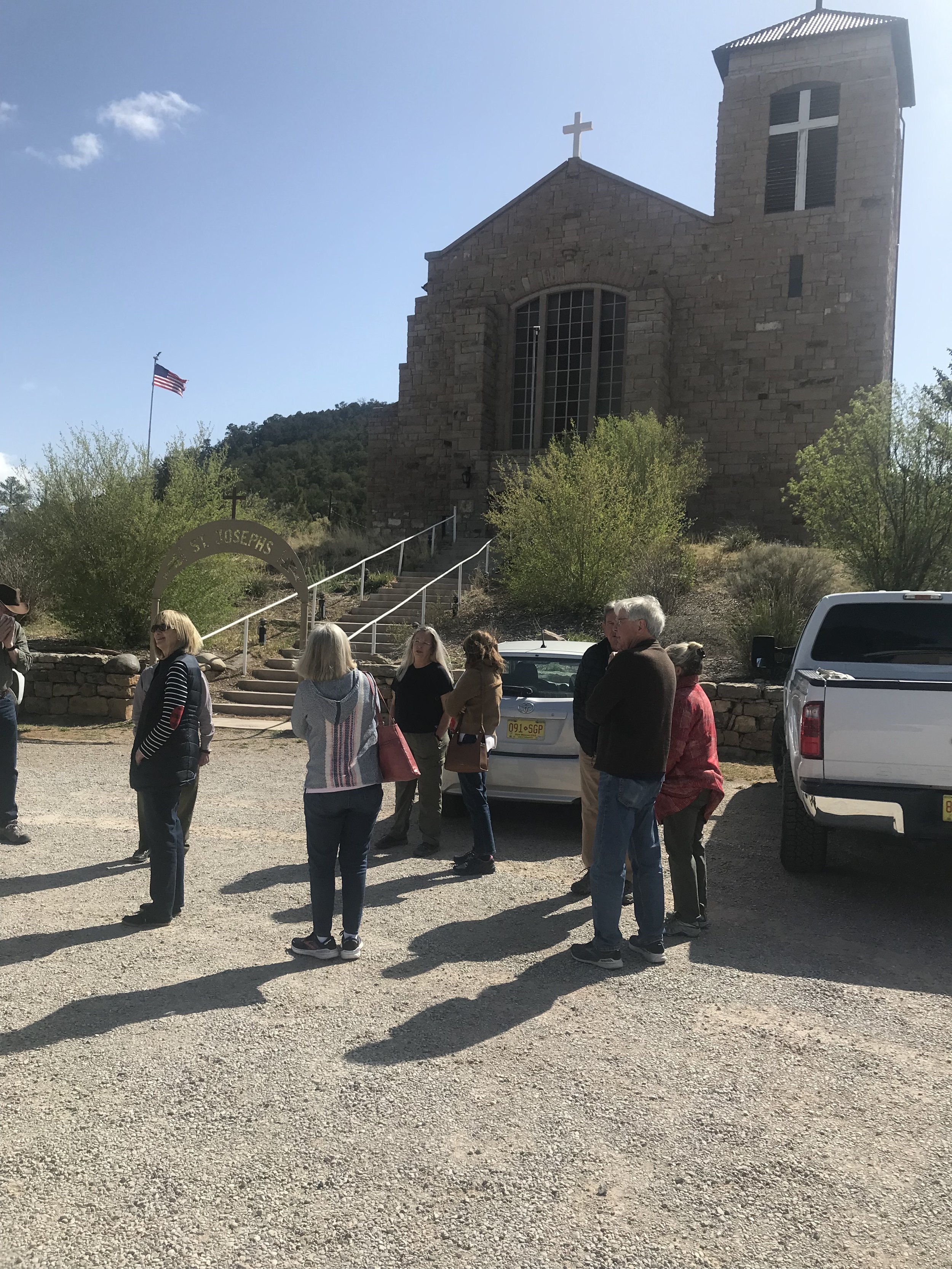
In awe and slightly behind schedule, we continued to Three Rivers Petroglyph Site for lunch. As we headed back on the road, we observed several crosses perched on steep hilltops with well-worn trails before arriving at Santo Niño de Atocha Chapel. The small, white chapel is minimalist from the outside but packed with religious paintings and votives on the inside. Santo Niño de Atocha is uncommon among New Mexican churches because much of the material culture contained within its walls alludes to the practices of Mexican Catholicism. Under a statue of the child saint, several votive offerings are placed, including a long hair braid. Paintings, toys, sculptures, and bandanas with hand-written messages are abundant in the space. One notable exception to this trend is a prayer for farmers which is written in English and takes up a large portion of the back wall. Frank Graziano suggested that Santo Niño de Atocha Chapel itself may have been built as a votive offering.


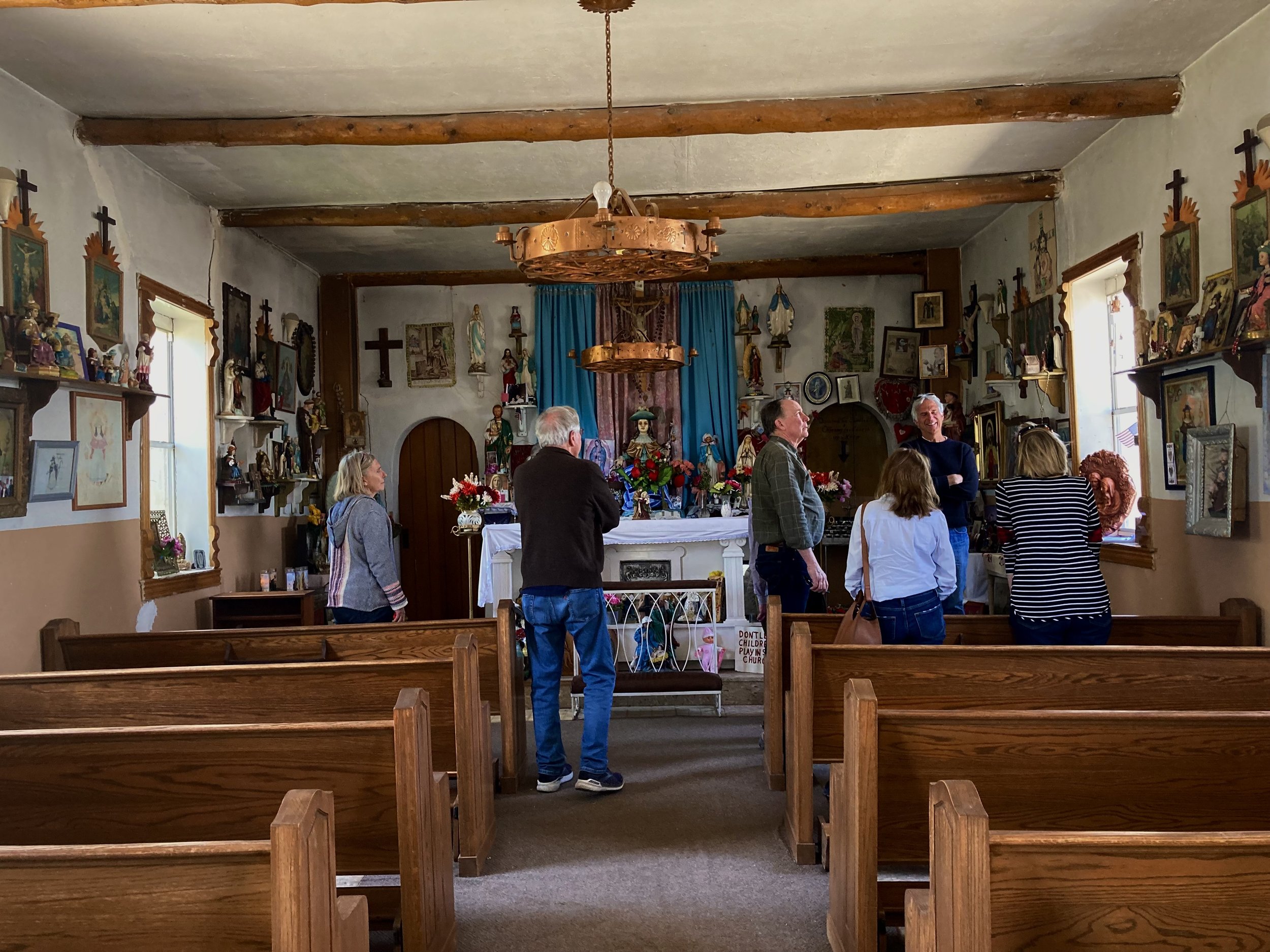
Only a few miles from Santo Niño de Atocha Chapel stands St. Patrick Chapel (also known as San Patricio), the last church we visited on our tour. St. Patrick Chapel stands beautifully in front of Sierra Blanca, its small arched windows bracketing the entryway. When driving up to St. Patrick, the arch that frames the chapel’s small bell also frames the clouds above the mountain. St. Patrick is sparse on the inside, with a few rows of wooden pews and four rectangular stained-glass windows. The windows, though simple, cast brilliant blue, red, and yellow light around the small space, making them the chapel’s most striking interior feature. The altar screen has several three-dimensional elements and replicates the same color scheme as the stained-glass windows.
St. Patrick was constructed in the late 1920s after being commissioned by two sisters from New York; it was named in honor of their parents. The chapel has since been associated with the Klinkole family who live nearby. At St. Patrick Chapel, Father Dave recalled the beautiful love story of Virginia and Bruce Klinkole. Virginia Klinkole, the first woman president of the Mescalero Apache, married Bruce after his military service in World War II. Shortly after the war, Bruce showed up on Virginia’s doorstep, telling her that hearing stories about her helped him survive the Bataan Death March. The love story associated with the chapel, along with its gorgeous Sierra Blanca backdrop, gives an air of romance to the small stone chapel.
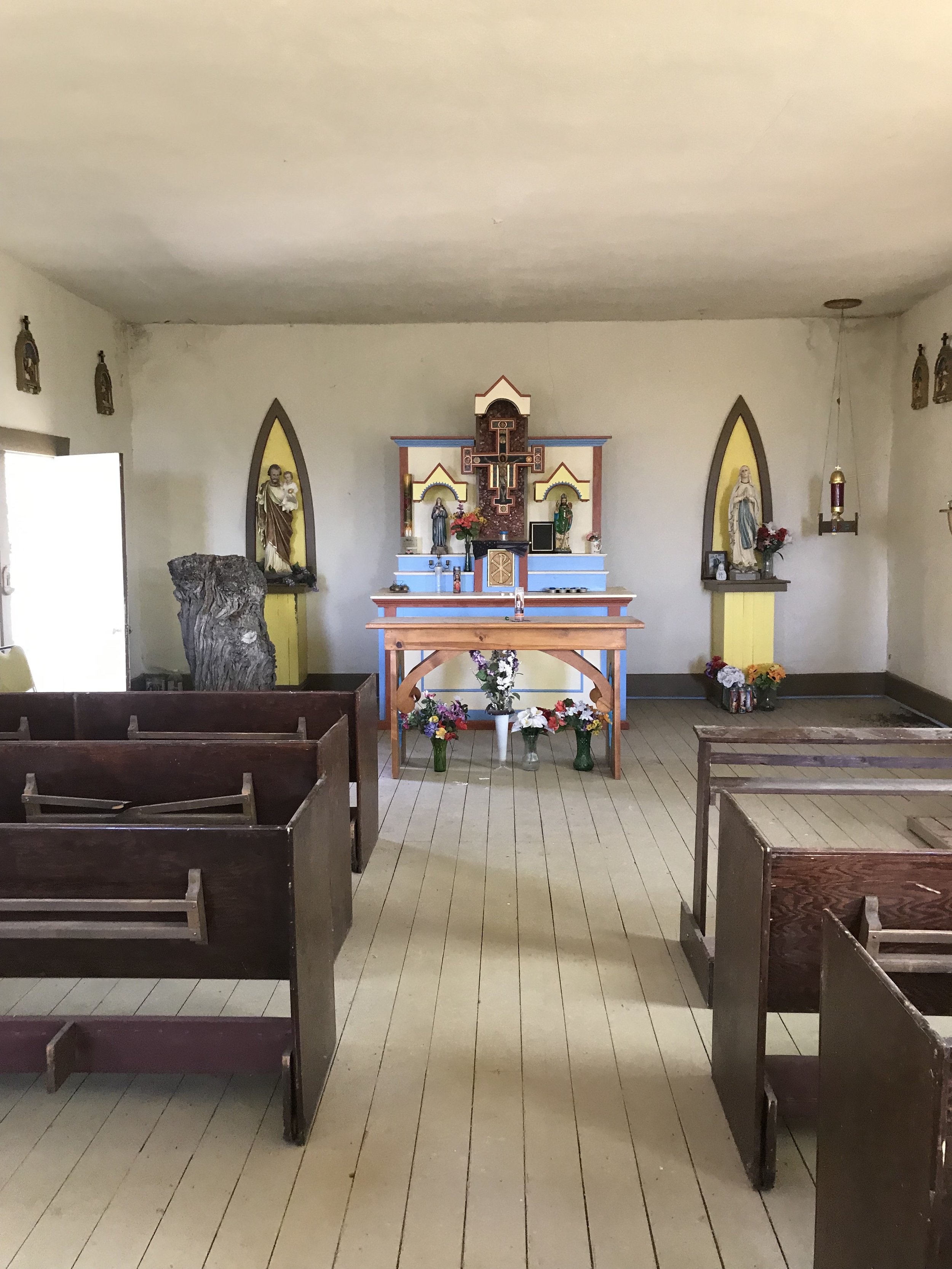
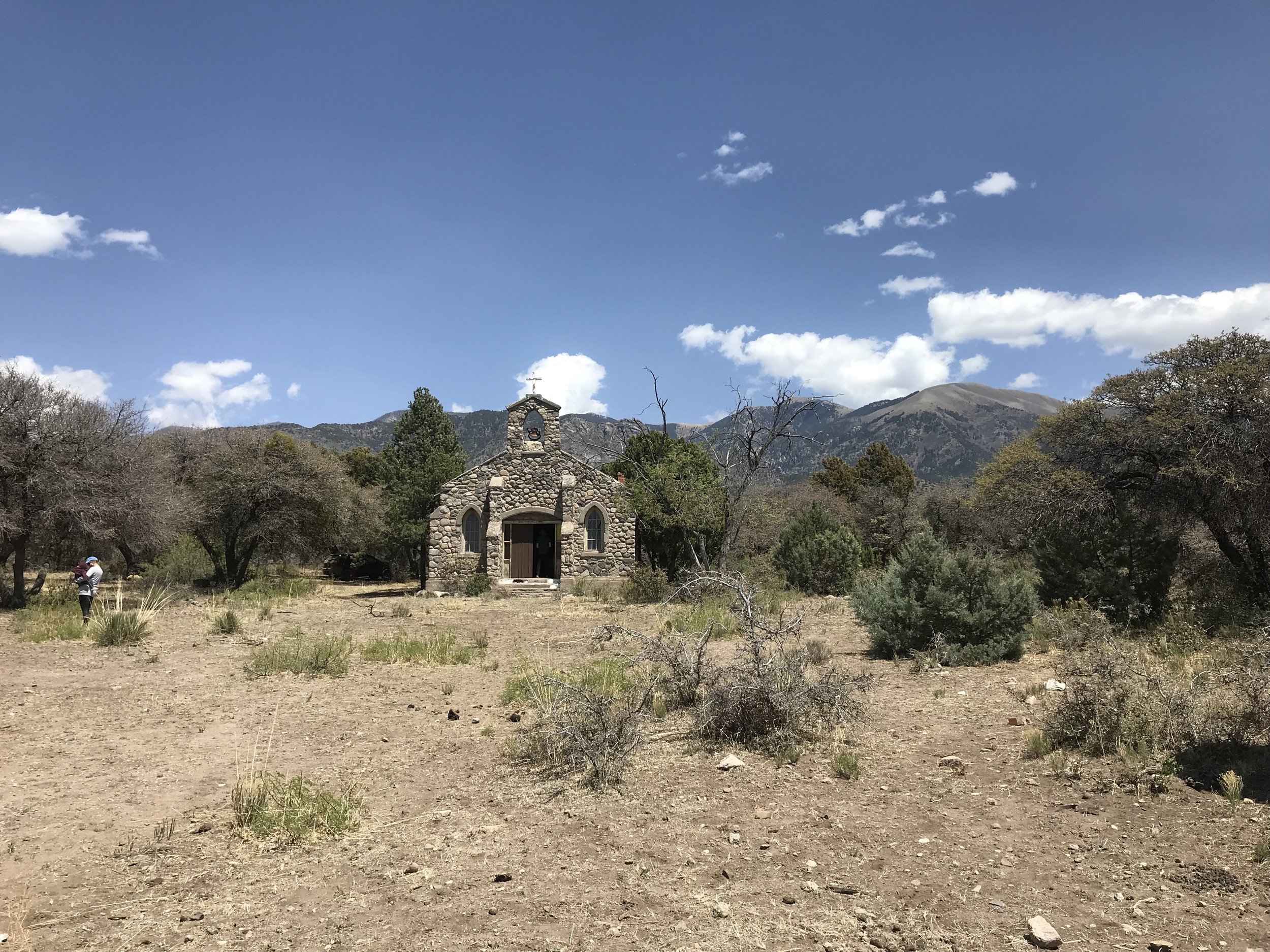
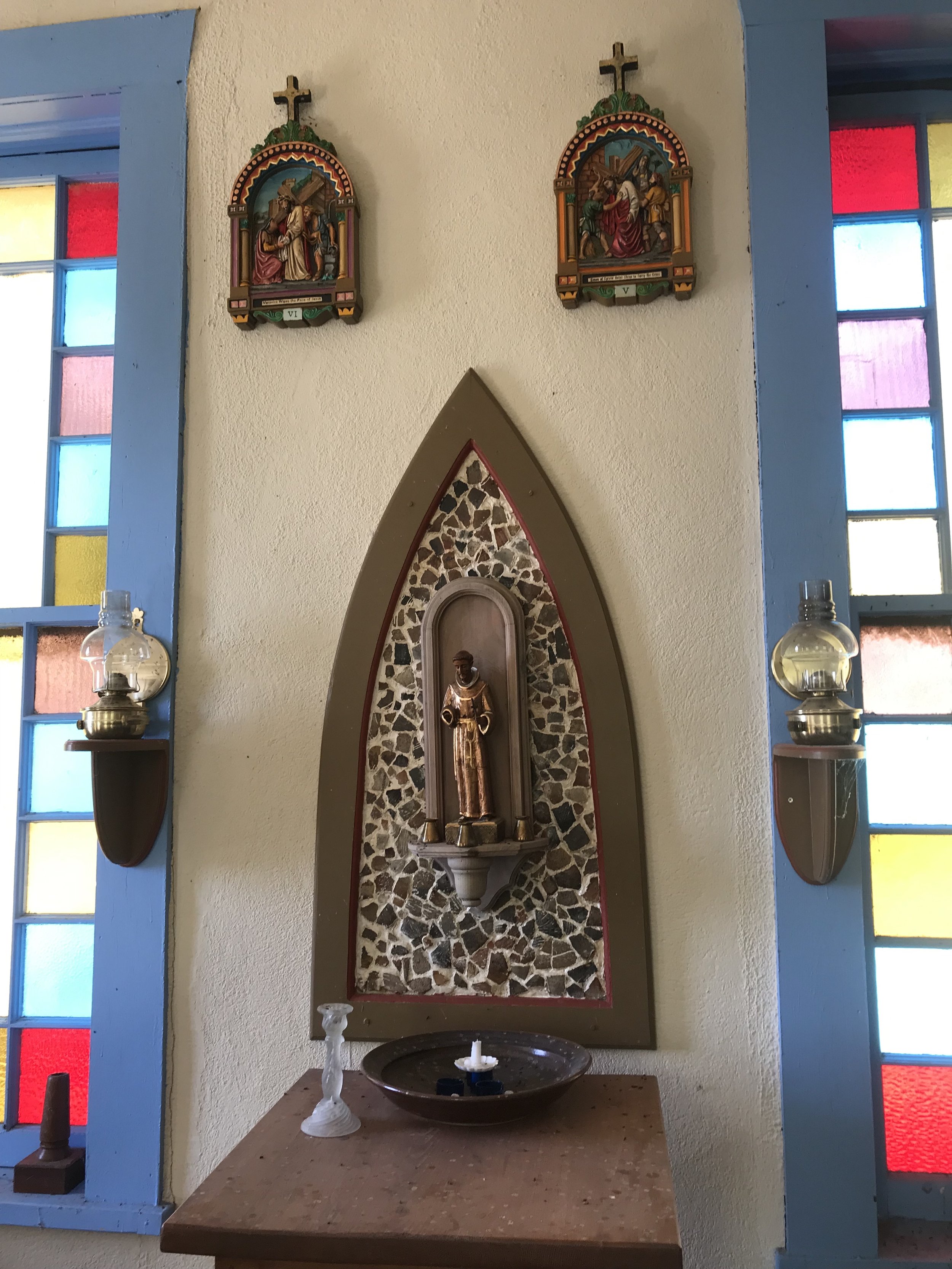
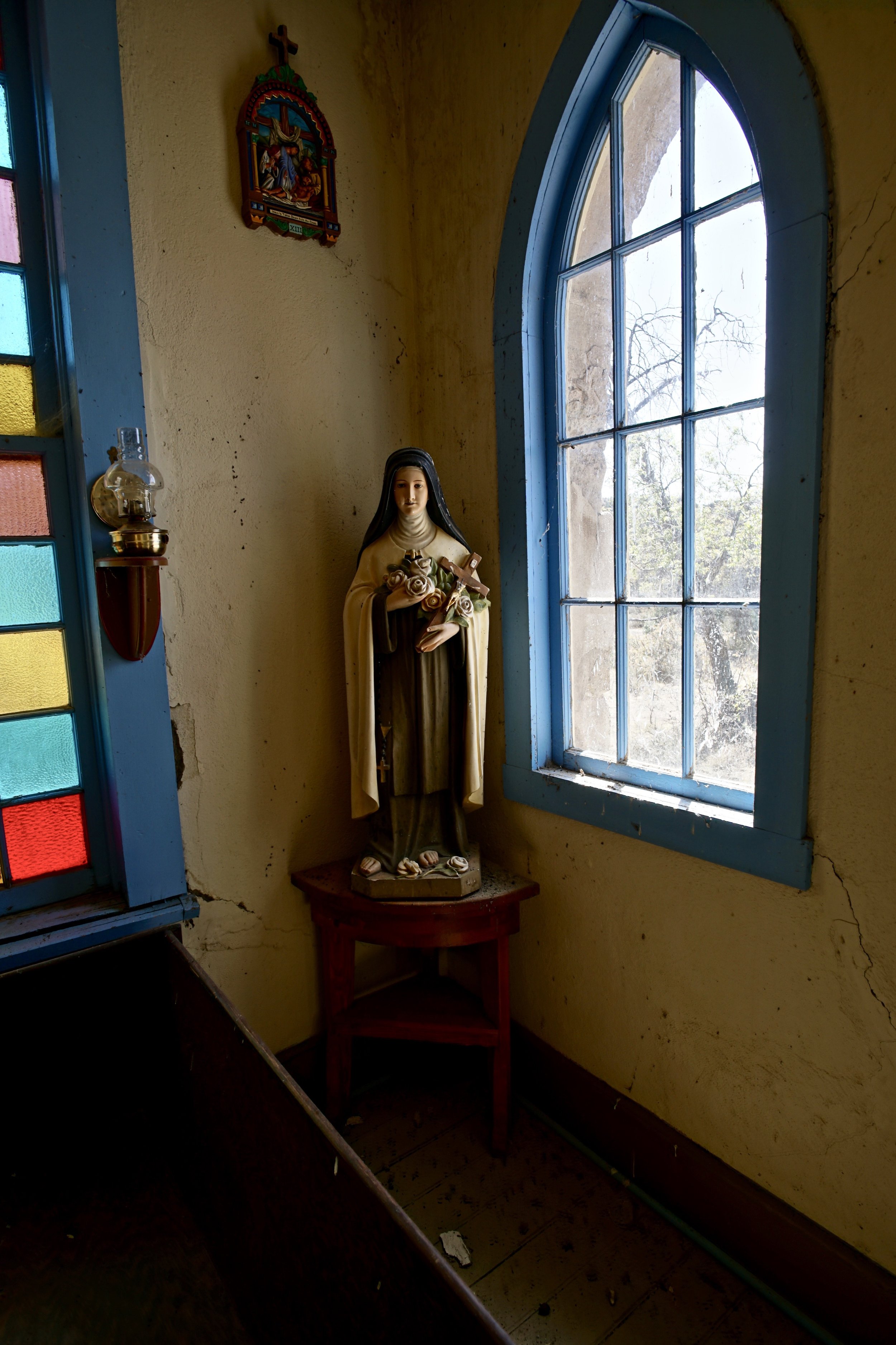

We capped our tour with a return to the Three Rivers Petroglyph Site, where we took a short hike and attempted to absorb as many petroglyphs as possible during our brief stop. These prehistoric images cover a wide area but are densely located and feature a wide array of imagery from people to geometric patterns to animals. They are varied and open to interpretation. To me, they were a reminder of how recently the construction of the churches occurred, our proximity in the grand scheme of things to the violence inflicted upon the Mescalero Apache people by Spain, Mexico, and the United States, and of the resilience of the Mescalero Apache people in the face of dehumanization. Leaving Three Rivers Petroglyph Site, we found ourselves with plenty of time to reflect on the history of south-central New Mexico while we waited for two freight trains to pass through the junction where the tracks merged—temporarily blocking the only country road that led us back to Highway 54 and the road home.
Frank’s book Historic Churches of New Mexico Today is currently on back order in our gift shop; however a copy can be purchased from Oxford University Press or Amazon. Read more about Nuevo Mexico Profundo’s restoration work and tours here.

